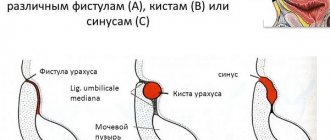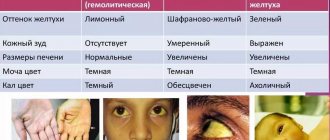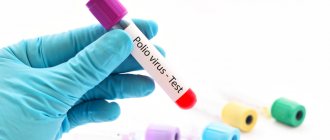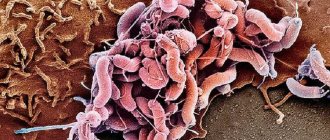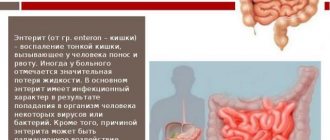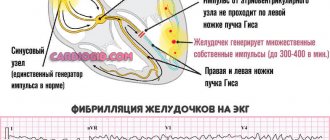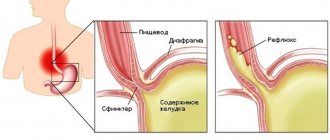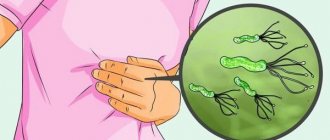Urologist
Mkrtchyan
Karen Gagikovich
13 years of experience
Candidate of Medical Sciences, member of the European Association of Urology and the Russian Society of Oncourologists
Make an appointment
Author of the article: Mkrtchyan Karen Gagikovich, Candidate of Medical Sciences, member of the European Association of Urology and the Russian Society of Oncourologists
The prostate gland is one of the most important components of the body system. Adenoma is a pathological growth of tissue. This process differs from cancer in that the tissue degeneration is benign. Therefore, in medical practice, the pathology is also commonly called benign prostatic hyperplasia. Prostate adenoma has symptoms of a certain nature, upon the manifestation of which a number of diagnostic measures should be carried out.
- drooping eyelids that make it difficult to see;
- red deposits and bags;
- drooping eyelid or lacrimal duct pathology;
- excess skin of the lower eyelid;
- profound age-related changes;
- asymmetry, congenital pathologies;
- damage to the skin due to trauma.
Symptoms and signs of prostate adenoma
The first subjective sensation that men may notice when developing prostate adenoma is problems with urination.
All signs of prostate adenoma are usually divided into two groups:
- filling symptoms. They are associated with fluid retention in the bladder. Manifest in the form of frequent urination both during the day and at night, and a sudden urge to urinate;
- symptoms of bowel movement. They are based on the development of an obstruction to urine excretion. The narrowing of the lumen of the urethra leads to a delay in the beginning of urination and a weakening of the urine stream.
Symptoms of the second stage
A distended bladder begins to perform its function worse; to empty it completely, the patient is forced to strain and engage the muscles of the genitourinary diaphragm. The volume of residual urine is up to 200 ml.
Urination becomes intermittent, with pauses. Increased pressure in the bladder and nodes compressing the confluence of the ureters disrupt the functioning of the upper urinary tract. Initial kidney damage is manifested by dry mouth and increased daily diuresis.
Causes
With age, the activity of the prostate decreases significantly, and the cells responsible for the synthesis of secretions are replaced by connective tissue, and their atrophy occurs. As a result, secretion stagnation develops and the volume of the prostate gland further increases; prostate adenoma in men actively develops. In parallel with this, nodules form, which over time increase and compress the lumen of the urethra. Their development is associated with hypertrophy of small glands located in the submucosal layer of the bladder neck. If prostate adenoma is not treated, the consequences can be quite serious.
Anatomy of the prostate gland
To better understand why certain symptoms occur with PDA, let’s tell you a little about the structure of the gland.
The prostate gland (prostate) is located in the pelvis under the bladder in men. It has a spherical shape and covers the urethra. Macroscopic structure - the gland consists of two lobes and an isthmus. Its normal dimensions are 2*3*4 cm. The gland consists of glandular tissue, which is collected into lobules and connective tissue (stroma). The function of the prostate is secretory, that is, the production of fluid, which is necessary to maintain the normal functioning of sperm.
|
Risk factors
Risk factors include:
- age. Men over 40 years of age should undergo an annual medical examination, since by the age of 65, every third person is diagnosed with prostate adenoma;
- hereditary predisposition. There is a certain pattern between the development of the disease in older men if their relatives (for example, father) also have a history of adenoma. A person is not excluded from the risk group even if the disease in blood relatives completely disappeared after removal of the prostate adenoma;
- diabetes mellitus and cardiovascular diseases;
- Lifestyle. Lack of physical activity and obesity increase the risk of developing prostate adenoma.
Prevention of BPH
There are several methods to prevent the development of adenoma:
Diet. Nutrition for adenoma should be balanced; foods should contain a lot of fiber, vitamins and microelements.
| Among the useful products: | There are also foods that are recommended to be excluded from the diet: |
|
|
Moderate physical activity. Thanks to them, not only does venous congestion in the pelvic organs decrease, but they also help reduce body weight. Hiking in the fresh air and active recreation are recommended.
Regular visits to the urologist. After 40 years, every man should visit a urologist once a year and take a PSA test. This may help in early diagnosis of this disease.
Complications
The main complications associated with prostate adenoma arise due to impaired urine flow. The most common ones include:
- acute urinary retention. This condition develops due to complete blockage of the lumen of the urinary canal. In such a situation, the patient needs immediate hospitalization. In severe cases, surgery is prescribed for prostate adenoma. If the pathology is in the early stages of development, then medications are prescribed for prostate adenoma;
- urinary retention in the bladder. This pathological process can lead to the development of inflammatory processes and the formation of stones. More often, specialists prescribe removal of prostate adenoma using modern methods;
- bleeding. They develop due to dilation and changes in the veins of the prostate gland and bladder;
- bladder diverticulum;
- Vesicoureteral reflux.
In parallel with the growth of prostate tissue, inflammation can also develop. Therefore, treatment of prostate adenoma should be started at the first signs of the disease.
Classification of BPH
By location:
- Subvesical form - the tumor spreads towards the rectum.
- Intravesical form - the tumor spreads towards the bladder.
- Retrotrigonal form - the tumor is located under the triangle of the bladder.
Distinguishes different stages (degrees) of adenoma development:
Stage 1 – compensated
Among the symptoms, patients note frequent urination, especially at night. The frequency can be up to 10 times a day and (or) up to 7 times a night. The urge is felt very strongly, but at the same time there is a delay in urination, a stream of urine flows out at a low speed, despite the efforts of the man. Sometimes there may be involuntary leakage of urine.
Emptying the bladder occurs due to the compensatory capabilities of the muscular wall of the bladder. This stage can be long, up to 9-10 years. But more intense progression often occurs. After compensatory capabilities are exhausted, the next stage begins.
Stage 2 – subcompensated
At this stage, inflammation of the bladder occurs, which causes pain when urinating. Frequent urination persists, and involuntary leakage of urine becomes more frequent. There is a feeling of incomplete emptying of the bladder. The stream of urine becomes not only sluggish, but also intermittent. There may be blood in the urine. With stress, alcohol consumption or hypothermia, there may be a complete lack of urination. In this case, pain appears in the bladder area, radiating to the lumbar region or above the pubic bone.
Due to the fact that the patient has to strain a lot when urinating, rectal prolapse or hernia may occur. The walls of the bladder are greatly stretched and saccular formations appear, in which up to a liter of residual urine can accumulate. If modern methods of treating adenoma are not used, then stage 3 of the disease occurs.
Stage 3 – decompensated
At this stage, it is necessary to use a urinal, since urine continuously leaks drop by drop from an overfilled bladder. General symptoms appear - weakness, nausea, loss of appetite, thirst, weight loss, and constipation may appear. When nitrogenous bases accumulate in the blood, urine smells from the mouth.
The volume of residual urine can reach two liters, overstretching of the walls of the bladder occurs, and the contractility of its walls decreases. Kidney dysfunction occurs. When urine stagnates, inflammation of the urinary tract may develop, which will manifest itself as an increase in body temperature. A patient with this stage urgently requires treatment of prostate adenoma not only with drugs, but also with surgical treatment.
When to see a doctor
You should contact a specialist when the first manifestations of prostate adenoma occur. They are often associated with urination. It becomes more frequent, at the beginning of the process there is a delay, and then a weak stream. Men also report a feeling of bladder fullness.
Specialists from a medical clinic in the center of Moscow, located at 2nd Tverskoy-Yamskaya Lane 10, can help solve the problem that has arisen. Specialists from JSC Medicine (clinic of Academician Roitberg) will tell you how to treat prostate adenoma. They will carry out a full range of diagnostic measures, prescribe therapy, and prescribe optimal medications for prostate adenoma.
Clinical manifestations
All clinical manifestations of pathology can be divided into irritative (which are associated with irritation) and obstructive (closely associated with difficulties in excreting urine). Irritative symptoms occur against the background of instability of the bladder structures and appear when an excessive amount of urine accumulates in the bladder cavity. Nocturia is one of the irritative symptoms, which is manifested by increased frequency of urination at night. A man can get up to go to the toilet two or more times a night.
Pollakiuria is also a characteristic sign of adenoma, which consists of increased frequency of urination during the day. If normally the patient urinates 4-6 times a day, then with pollakiuria he runs to the toilet 15-20 times a day. Patients are also bothered by false urination, which also refers to the irritative manifestations of prostatic hyperplasia.
Symptomatic manifestations of an obstructive nature include signs such as a sluggish stream of urine during urination or primary urinary retention, that is, when urine is not released immediately, but begins to flow out only after some straining. To go to the toilet normally, a man must quite noticeably tense his abdominal muscles.
Also, obstructive symptoms include the intermittent nature of urination, when the stream is interrupted many times during one emptying, then the process of urination resumes again, and so on several times. At the end of the urination process, urine comes out in droplets, which should not normally happen. Moreover, even when the patient urinates, he still has a feeling of incomplete bladder emptying.
Diagnosis of prostate adenoma
The disease can be diagnosed in the initial stages. Therefore, experts strongly recommend that men over 40 years of age undergo an annual preventive medical examination. Collecting complaints and conducting an objective examination allows you to detect prostate adenoma in time. In such a situation, it is very important to make sure that it is benign hyperplasia.
To carry out diagnostics in the central district of Moscow, you can seek advice from a urologist at JSC “Medicine” (clinic of Academician Roitberg) at 2nd Tverskoy-Yamskaya lane 10. Specialists will be able to promptly detect signs of prostate adenoma and prescribe effective treatment.
Treatment
In the initial stages of the disease, conservative therapy may also be quite effective. Treatment of prostate adenoma with drugs helps to reduce the severity of the clinical picture. For this purpose, herbal preparations, alpha-blockers and 5-alpha reductase inhibitors are used. Surgeries for prostate adenoma have several types:
- transurethral resection;
- adenomectomy;
- laser vaporization of the prostate;
- laser enucleation (this is an effective and quick removal of prostate adenoma with a laser).
Timely removal of prostate adenoma means rapid normalization of a man’s health. Treatment of prostate adenoma in our clinic is carried out comprehensively.
Home remedies
The most effective remedy that can be prepared at home is rectal suppositories. You can learn about their effectiveness from a specialist during your appointment.
For preparation you need to use 20 g of cocoa butter and 1 g of propolis. You need to melt the butter and mix propolis into it. Then form small rectal suppositories and place them in the refrigerator. Suppositories should be used twice a day for two months.
But this is an auxiliary measure. Therefore, one cannot be sure that “if I treat prostate adenoma at home, this means that I will completely get rid of the disease.” No alternative therapy method has ever given 100% results. It is recommended to avoid self-medication altogether.
Myths and dangerous misconceptions in treatment
There are misconceptions among the population that:
- Prostate adenoma in men cannot be treated.
- This disease can NOT cause infertility.
- Only older men are susceptible to its development.
- Prostate adenoma is NOT a risk factor for developing cancer.
To receive comprehensive advice regarding your health condition and this disease, seek help from a urologist.
How to make an appointment with a specialist
You can make an appointment with a specialist by phone or using the feedback form on the website. Our clinic is located at the address: Moscow, 2nd Tverskoy-Yamskoy lane, building 10, Mayakovskaya metro station.
Attention! You can cure this disease for free and receive medical care at JSC "Medicine" (clinic of Academician Roitberg) under the State Guarantees program of Compulsory Medical Insurance (Compulsory Medical Insurance) and High-Tech Medical Care. To find out more, please call +7(495) 775-73-60, or on the VMP page for compulsory medical insurance

